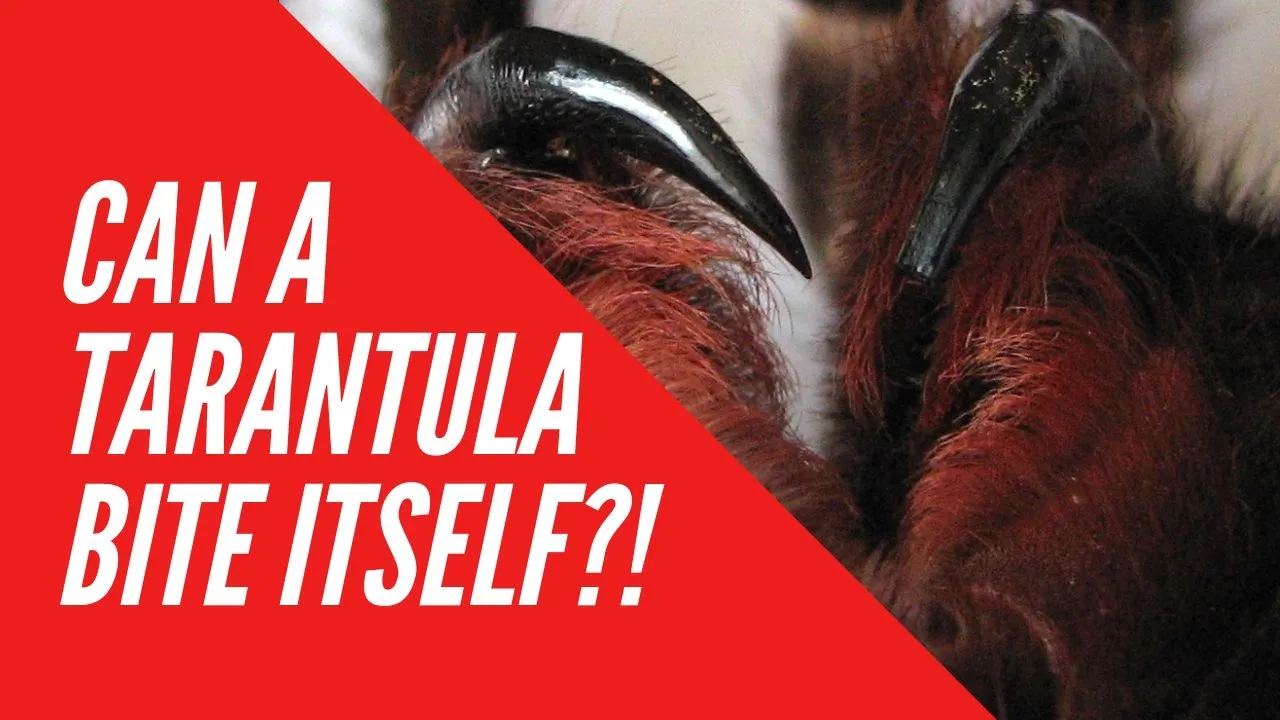Tarantula Bite! 5 Symptoms & Quick First Aid
Encountering a tarantula can be an exciting experience, but it’s essential to understand the potential risks, including the possibility of a tarantula bite. While most tarantula bites are not life-threatening to humans, they can be painful and cause various symptoms. This guide provides crucial information on recognizing a tarantula bite, identifying common symptoms, and administering quick first aid. It also covers when to seek medical attention, ensuring you’re well-prepared to handle such a situation. Knowing how to react can significantly impact your health and well-being, offering peace of mind. Therefore, let’s delve into the specifics of what to do if you or someone you know experiences a tarantula bite.
Recognizing a Tarantula Bite
Identifying a tarantula bite is the first step towards effective treatment. While it might be immediately obvious if you witness the bite, the symptoms that follow can help confirm it. Understanding what to look for is key, allowing for prompt action and minimizing potential complications. The appearance of the bite and the onset of symptoms can vary, but certain signs are commonly associated with tarantula bites. Awareness of these indicators is crucial for anyone who may come into contact with these fascinating creatures, ensuring a quick and informed response if a bite occurs. Proper identification is vital for providing the right care and preventing secondary issues.
Immediate Symptoms to Watch For

When a tarantula bites, immediate symptoms often appear quickly. These early signs are vital for recognizing that you’ve been bitten and need to take immediate action. The faster you can identify the issue, the better your chances of managing the bite and preventing more severe reactions. Common immediate symptoms include sharp, localized pain at the bite site. This can be followed by a burning sensation or a feeling similar to a bee sting. Keep an eye out for initial redness, which often develops around the bite. Swiftly addressing these initial symptoms helps to minimize the discomfort and any secondary health concerns. Always keep track of the severity and onset of these initial reactions to know if medical attention is required.
Delayed Reactions
Not all symptoms of a tarantula bite manifest right away. Some reactions may appear hours or even days after the initial bite. Monitoring for these delayed reactions is crucial for a comprehensive understanding of how the bite affects you. Delayed symptoms can include more pronounced swelling, itching, or the development of blisters. Muscle cramps can occur, or you may experience anxiety or panic, making it crucial to stay calm. In some cases, a secondary infection might occur. Being aware of the possible delayed effects enables you to seek timely medical intervention and avoid any health complications, keeping a close watch on your body’s response over time.
The 5 Most Common Symptoms
Pain and Discomfort

One of the primary and immediate symptoms of a tarantula bite is pain. The intensity of this discomfort can vary, ranging from a mild sting to a more severe, throbbing ache. This pain is often localized to the bite site, but in some cases, it may radiate outward. The degree of pain depends on several factors, including the size of the tarantula, the location of the bite, and an individual’s sensitivity. Understanding that pain is a likely symptom allows for the use of pain relief measures, such as over-the-counter medications or applying a cold compress. Being prepared and knowing what to expect can help in managing the experience and alleviating the distress associated with a tarantula bite. Remember to keep a close eye on the pain level and monitor for changes.
Redness and Swelling
Redness and swelling are common physical reactions following a tarantula bite. The area surrounding the bite often becomes red as the body’s inflammatory response kicks in. Swelling may develop, making the affected area appear larger and potentially tender to the touch. This reaction is a natural part of the body’s defense mechanism, but it can also cause discomfort. Monitoring the extent of the redness and swelling is important, as an increase could indicate a more severe reaction or the need for medical intervention. Applying a cold compress can help reduce swelling and alleviate discomfort. Keeping an eye on changes in appearance will aid in assessing the situation and deciding if you need to seek medical advice.
Itching and Irritation
Itching and irritation are frequently reported symptoms following a tarantula bite. The bite site can become incredibly itchy, which might be accompanied by a general feeling of irritation. This itchiness can be quite bothersome, making it difficult to resist scratching. While scratching may offer temporary relief, it can also exacerbate the situation, potentially leading to further irritation or even infection. It’s important to avoid scratching the affected area to prevent skin damage and promote healing. To relieve the itching, consider using a topical anti-itch cream or applying a cold compress. Recognizing that itching and irritation are common can help manage the symptoms and avoid unnecessary complications. (Image: bite-redness-swelling.webp)
Muscle Cramps

Muscle cramps may occur after a tarantula bite, although this symptom is not as frequently reported as pain, redness, or itching. The cramps might affect the muscles near the bite site or, in some cases, spread to other areas of the body. These cramps can range in intensity, from mild twitches to more severe, painful spasms. Staying hydrated and stretching gently can sometimes help ease the discomfort associated with muscle cramps. If the cramps become severe or persist, it’s essential to consult a medical professional. Being aware of this less common symptom can help you recognize potential complications and take appropriate action to get relief. It’s always wise to seek medical advice if you experience unexpected or significant symptoms.
Anxiety or Panic
Experiencing anxiety or panic is possible after a tarantula bite, especially if you are afraid of spiders. The physical symptoms, combined with the shock of being bitten, can trigger emotional reactions. Anxiety can manifest as feelings of nervousness, restlessness, or an overwhelming sense of dread. Panic attacks, which include intense fear, rapid heartbeat, and difficulty breathing, may also occur. If you feel anxious or panicky after a tarantula bite, try to remain calm and focus on your breathing. It is helpful to have someone with you and let them know how you feel. Seeking reassurance from others and following first-aid steps can help you manage these emotional responses, and if symptoms persist, do not hesitate to get medical help. (Image: anxiety-or-panic.webp)
Quick First Aid Steps
Clean the Wound

The first step in treating a tarantula bite is to clean the wound thoroughly. Use mild soap and water to gently wash the affected area. This step helps remove any venom or debris that might be present, reducing the risk of infection. Pat the area dry with a clean towel, being careful not to rub or irritate the skin. Cleaning the wound properly is a simple yet crucial measure that should be taken immediately after the bite. This ensures that the bite area stays clean and reduces the potential for complications, supporting faster and more comfortable healing. Always prioritize this step to set the foundation for proper recovery. (Image: tarantula-bite.webp)
Apply a Cold Compress
After cleaning the wound, applying a cold compress can help alleviate symptoms like pain, redness, and swelling. A cold compress helps constrict blood vessels, which reduces inflammation and minimizes the sensation of pain. Wrap ice in a clean cloth and apply it to the bite site for 10-20 minutes at a time, several times a day. If you do not have ice, a package of frozen vegetables wrapped in a towel works as well. Applying a cold compress is a simple, effective way to manage immediate discomfort. Always ensure that the ice is wrapped in a cloth to avoid direct contact with the skin and prevent ice burn. Consistent use of a cold compress helps manage the bite’s impact and keeps you comfortable. (Image: ice-compress.webp)
Elevate the Affected Area
Elevating the affected area is another simple first aid step that can significantly reduce swelling. Raising the limb above your heart encourages blood flow away from the bite site, which helps minimize inflammation and swelling. If the bite is on your arm or leg, try to keep it elevated as much as possible. This is especially helpful if you are sitting or lying down. Combining elevation with the use of a cold compress further enhances its effects. Proper elevation can significantly reduce discomfort and speed up the healing process. This simple step is easy to implement and can provide significant relief. (Image: elevate-arm.webp)
Monitor for Severe Reactions

Following a tarantula bite, it is crucial to monitor for severe reactions. Although most bites are not life-threatening, some individuals may experience more serious symptoms that need immediate medical attention. Keep a close eye out for signs of an allergic reaction, such as difficulty breathing, swelling of the face or throat, or hives. Also, be aware of any severe symptoms, such as intense pain, muscle cramps, or changes in mental status. If you observe any of these signs, seek medical help immediately. Early intervention can prevent serious complications and ensure your safety and well-being. Remember that prompt action is vital in cases of severe reactions, so don’t hesitate to get help if needed.
When to Seek Medical Attention
Allergic Reactions
It’s important to know when to seek medical attention after a tarantula bite. One of the primary reasons to consult a doctor is if you suspect an allergic reaction. Signs of an allergic reaction can include difficulty breathing, swelling of the face, lips, tongue, or throat, and hives or a widespread rash. These symptoms indicate a serious immune response and require immediate medical care. If you experience any of these signs, do not delay; call for emergency medical help. Quick treatment is vital for preventing a severe allergic reaction from becoming life-threatening. Always be aware of your body’s reaction and seek help if you feel something is not right. (Image: allergic-reaction.webp)
Severe Symptoms

Aside from allergic reactions, certain severe symptoms warrant immediate medical attention. If you experience intense pain, significant swelling, or muscle cramps that do not subside, it is best to consult a healthcare professional. Other signs indicating a need for medical care include changes in mental status, such as confusion or disorientation, or the appearance of any infection signs, such as pus or increasing redness around the bite site. The severity of your symptoms should guide your decision to seek medical attention. When in doubt, it is always best to err on the side of caution and consult with a medical expert. Prompt medical care can prevent potential complications and ensure the best possible outcome. (Image: medical-attention.webp)
Secondary Infections
Secondary infections can occur after a tarantula bite, and this is another situation that necessitates medical attention. Infections can result from bacteria entering the wound, and symptoms often include increased pain, redness, swelling, warmth around the bite area, and the presence of pus. If you observe any of these signs, it is important to seek medical care promptly. A healthcare provider can diagnose the infection and prescribe antibiotics or other treatments to prevent it from worsening. The sooner you get treated, the quicker your recovery will be. Early detection and treatment of secondary infections ensure a better recovery and the prevention of potential long-term health complications. Do not hesitate to seek medical care to avoid such infections.
In conclusion, while most tarantula bites are not life-threatening, knowing the symptoms and first aid measures is essential for handling these situations effectively. Recognizing the immediate and delayed signs, administering quick first aid, and understanding when to seek medical attention can significantly impact your health and well-being. Prompt action minimizes discomfort and potential complications. By following the guidelines discussed in this guide, you can confidently address tarantula bites and keep safe. Staying informed and proactive is always the best approach.
